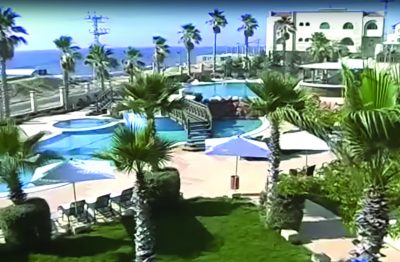×


We have detected your country as:
Please click here to go to the USA website or select another country from the dropdown list.
by: Kate Norman, BFP Staff Writer
A 2017 report from the Palestinian Central Bureau of Statistics (PCBS) revealed that nearly one in three of the 2.1 million Palestinians in the Gaza Strip lives below the poverty level, and 33.7% of the population lives in a level of deep poverty, which the PCBS defines as being unable to meet “the minimum required for food, clothing and housing.” Unemployment in the Strip is at a staggering 52%, according to the World Bank, who is not predicting that percentage to improve anytime soon.
The Israeli Defense Forces (IDF) officer in charge of Palestinian affairs at the Coordinator of Government Activities in the Territories (COGAT) warned in April that living conditions in the enclave are “at breaking point,” Ynetnews reported. Lt. Col. Khatib Mansour said electricity runs for only eight hours per day and 97% of the water is undrinkable. Due to the mismanagement of the Strip’s infrastructure by Hamas—the terror organization in control of Gaza—hundreds of thousands of gallons of sewage spill into Gaza’s water supply and into the Mediterranean, polluting the water.
These bleak statistics—combined with images flooding the media of weeping Palestinians standing amid the rubble of bombed-out buildings or children tiptoeing through sewage and garbage heaps—make it difficult not to imagine the entire coastal enclave living in a dismal, appalling state.
 What about the Gazans who aren’t living in poverty? Social media users are offering a different perspective of the Strip that the media doesn’t show. It turns out Palestinians are proud of the upscale options that the Strip does offer.
What about the Gazans who aren’t living in poverty? Social media users are offering a different perspective of the Strip that the media doesn’t show. It turns out Palestinians are proud of the upscale options that the Strip does offer.
A Twitter user called Imshin, who describes herself in her profile as an Israeli Jew, popularized a hashtag called #thegazayoudontsee for people to share videos and images depicting an entirely different lifestyle than what is portrayed in the media. The images show children visiting candy shops and bakeries bursting with delectable sweets; toy stores with the latest trends—including dolls from Frozen and Captain America; posh penthouses and luxurious homes dripping with marble and lavish decor; and pristine, luxurious resorts with jetted swimming pools, tennis courts and opulent rooms complete with picturesque views of the Mediterranean.
A man in Gaza who goes by the username of Shady Sopoh posts on various social media accounts about his life in the Strip. It doesn’t paint the grim picture you would expect. Though his videos are in Arabic, they depict a young man living a normal life by Western standards. He dances with his friends on the streets, goes to the beach and enjoys watermelon and barbecue on the shores of the Mediterranean while children play in the waves. He plays soccer and posts selfies with his trendy friends.
Shady Sopoh is one of many young Gazans who give a glimpse into their lives in the enclave via social media. Perhaps the most famous are teenage sisters Haya and Maram of Two Sisters Tube, a popular YouTube channel that runs just shy of 2.4 million followers. Like other teenage social media influencers around the world, they show off spoils from their recent shopping trips for back-to-school clothing, desserts they made to challenge their mother’s baking skills, their morning routines and their stays in luxury resorts. They effectively engage their audience by involving them in things like choosing the teens’ breakfast each morning before they begin their fast for Ramadan (one of the Five Pillars of Islam when stringent disciplines are observed). Fans were dismayed to learn, however, that the sisters and their family packed up and left their home in Gaza. They posted a video showing their now-empty house and did not say where they are heading next.
 While Hamas and the Palestinian Authority (PA) paint a bleak picture of daily life for Gazans—blaming their Jewish neighbors for their woes—the Palestinian Ministry of Tourism and Antiquities boasts about what Gaza has to offer. “Today, Gaza City is the economic center for a region where citrus fruits and other crops are grown,” the website reads of the enclave’s largest city. “The city is famous for its hand-woven carpets, wicker furniture and pottery. Famous also for its fresh seafood, Gaza has numerous restaurants along the beach as well as public parks where visitors can enjoy the pleasant Mediterranean breeze.”
While Hamas and the Palestinian Authority (PA) paint a bleak picture of daily life for Gazans—blaming their Jewish neighbors for their woes—the Palestinian Ministry of Tourism and Antiquities boasts about what Gaza has to offer. “Today, Gaza City is the economic center for a region where citrus fruits and other crops are grown,” the website reads of the enclave’s largest city. “The city is famous for its hand-woven carpets, wicker furniture and pottery. Famous also for its fresh seafood, Gaza has numerous restaurants along the beach as well as public parks where visitors can enjoy the pleasant Mediterranean breeze.”
The luxurious Al Mashtel hotel in Gaza City is one of many resorts in the Strip that any traveler could be happy to stay at. Given 3.5 out of 5 stars on TripAdvisor, reviewers describe the hotel as “a top notch hotel that serves excellent food, features rooms with fabulous views, and staff that is completely devoted to the guests,” with rooms “so comfortable that they will make you feel as if you were in some resort on the Southern European coast.” Although another reviewer said the rooms “are large with [comfortable] beds,” “the [terrace] from the restaurant is very nice” and “the food is very good,” TripAdvisor user tweakertje complained that the downside is “when there is a party, the music is very loud and will disturb [your] night rest.”
Based on the available information, too many people in Gaza live in conditions that no person—Israeli, Palestinian or otherwise—should have to endure. Social media images show, however, that life isn’t intolerable for everyone living in the enclave. Middle- and upper-class populations are present in Gaza, however small a percentage they represent.
There are people who go a majority of their day without water and have to tiptoe their way through sewer sludge while crossing a road, but there are also people who dance at glittering weddings, shop at the mall with their friends, work out at the gym to sweat off the extra weight they gained from feasting each night of Ramadan, enjoy a day at the beach with family and shop at markets to load up on Doritos and Snickers.
All logos and trademarks in this site are property of their respective owner. All other materials are property of Bridges for Peace. Copyright © 2024.
Website Site Design by J-Town Internet Services Ltd. - Based in Jerusalem and Serving the World.